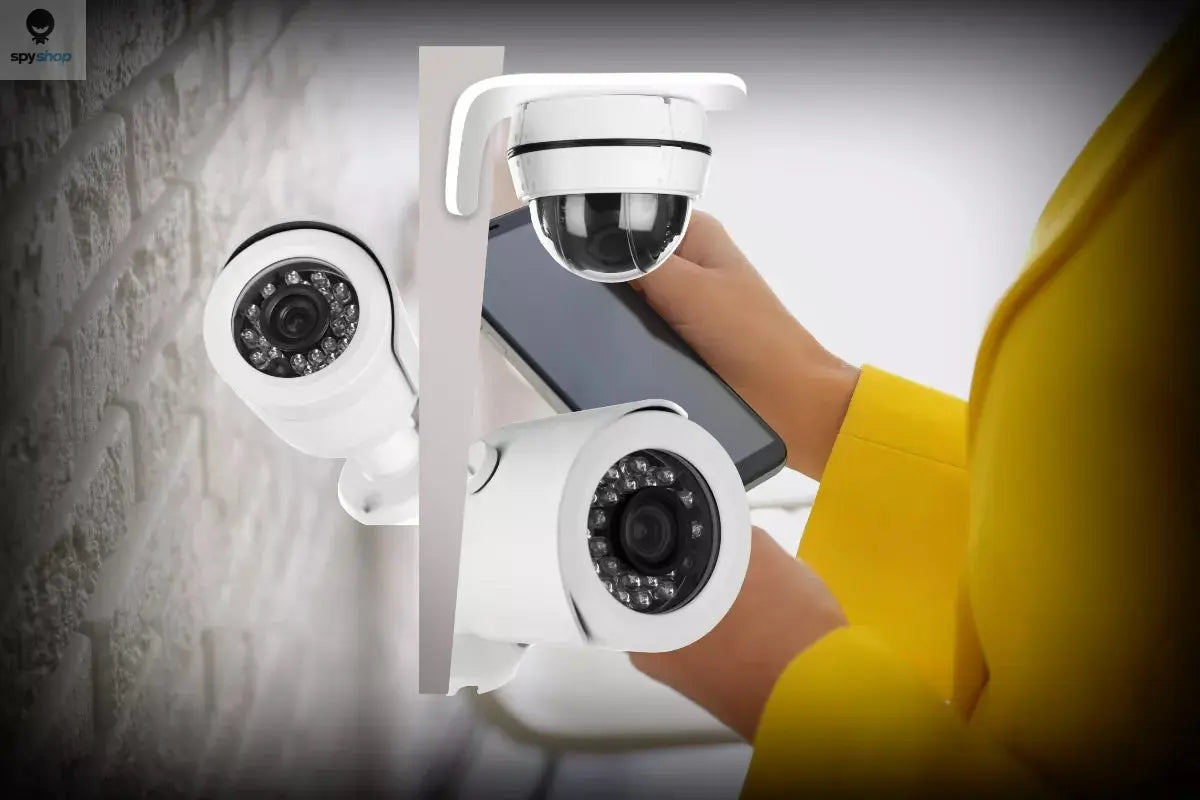
Choosing Between Indoor and Outdoor Security Cameras: Which is Right for You? #SecurityCameras #HomeSurveillance
Security cameras have become an integral part of modern home and business safety systems. Whether you’re monitoring the perimeter of your property or safeguarding your indoor spaces, the decision to use indoor or outdoor security cameras can significantly impact your overall security strategy. This guide will help you understand the benefits, features, and limitations of both types, enabling you to make an informed choice tailored to your needs.
Understanding the Roles of Indoor and Outdoor Cameras #HomeSafety
Indoor and outdoor cameras each serve unique purposes:
-
Outdoor Cameras: These devices focus on detecting intruders or suspicious activity outside your home, acting as the first line of defense. By identifying potential threats early, outdoor cameras can help prevent incidents before they occur.
-
Indoor Cameras: Designed to capture activities within your home, indoor cameras are invaluable for monitoring internal spaces and documenting any wrongdoing that takes place inside.
Your choice will depend on your specific security objectives, such as whether you’re prioritizing external surveillance or internal monitoring.
Durability: Resilience Matters Outdoors #WeatherProof
One of the key differences between indoor and outdoor cameras is their ability to withstand environmental conditions:
-
Outdoor Cameras: Built to endure extreme weather, these cameras are resistant to rain, snow, wind, and dust. Many models are impact-resistant to deter tampering or vandalism. This makes them ideal for areas prone to crime or heavy traffic, such as busy neighborhoods or commercial premises.
-
Indoor Cameras: While not designed for harsh weather, indoor cameras are compact and lightweight. They’re perfect for climate-controlled environments where external durability isn’t a concern.
For shop owners or residents in high-crime areas, outdoor cameras are a must-have to ensure robust protection.
Flexibility: Adaptability in Placement #CameraPlacement
Indoor cameras often offer greater flexibility in terms of placement and usage:
-
Indoor Cameras: These devices are easy to move and reposition, allowing you to adjust their angles and coverage as needed. Spy cameras, for instance, can be disguised as everyday household objects like pens or power outlets, making them highly versatile.
-
Outdoor Cameras: Typically fixed in position, outdoor cameras are installed to monitor specific areas such as driveways, entrances, or gardens. While they’re less flexible than indoor cameras, many models include adjustable mounts to refine their field of view.
If you’re seeking adaptability and covert surveillance, indoor cameras are an excellent choice. However, for consistent outdoor monitoring, durability takes precedence over flexibility.
Accessibility: Real-Time Monitoring Anywhere #RemoteAccess
Modern security cameras—both indoor and outdoor—come equipped with advanced accessibility features:
-
Remote Viewing: Live-stream footage directly to your smartphone, tablet, or computer, giving you peace of mind no matter where you are.
-
Notifications: Receive instant alerts when motion is detected, ensuring you’re aware of any unusual activity.
This level of accessibility is especially beneficial for frequent travelers or business owners who want to keep a constant eye on their properties.
Motion Detection: Efficient Recording #SmartTechnology
Both indoor and outdoor cameras often feature motion detection technology:
-
Space-Saving: Motion detection ensures cameras only record when movement is detected, preventing storage devices from filling up with unnecessary footage.
-
Customizable Sensitivity: Many models allow you to adjust sensitivity settings, reducing false alarms triggered by pets or weather-related movements.
Motion detection is a valuable feature for optimizing storage and ensuring that only relevant footage is captured.
Integrating Both for Comprehensive Security #BestOfBothWorlds
For the best protection, consider combining indoor and outdoor cameras:
-
Layered Security: Outdoor cameras act as the first line of defense, while indoor cameras provide an additional layer of monitoring.
-
Enhanced Coverage: Cover all entry points and critical areas inside your home to create a comprehensive security network.
Conclusion: Tailoring Your Security System to Your Needs #StaySecure
Choosing between indoor and outdoor security cameras depends on your specific requirements. Outdoor cameras offer durability and external vigilance, while indoor cameras provide flexibility and internal peace of mind. By understanding their unique benefits and limitations, you can design a security system that keeps your property and loved ones safe. For maximum protection, a combination of both types ensures comprehensive coverage and peace of mind.


